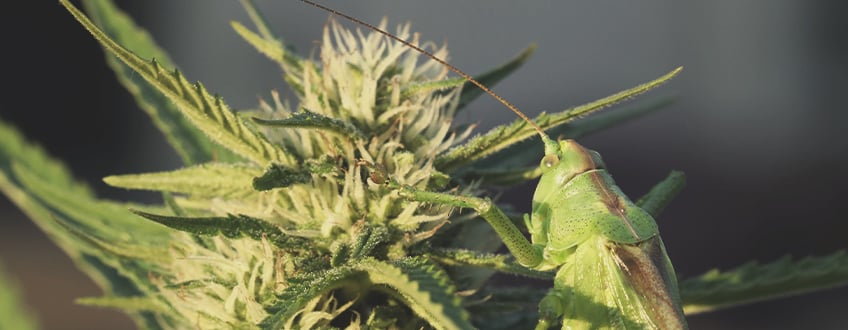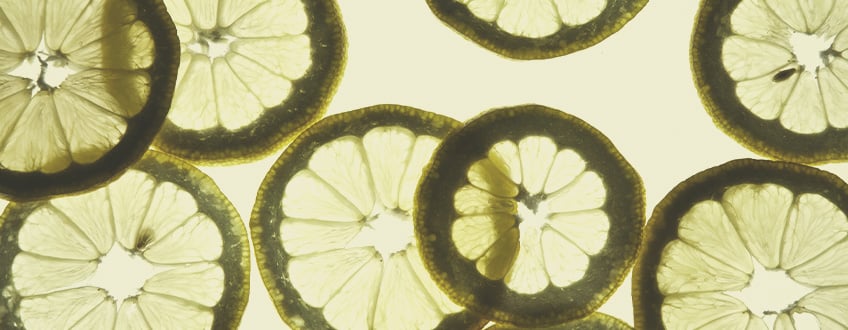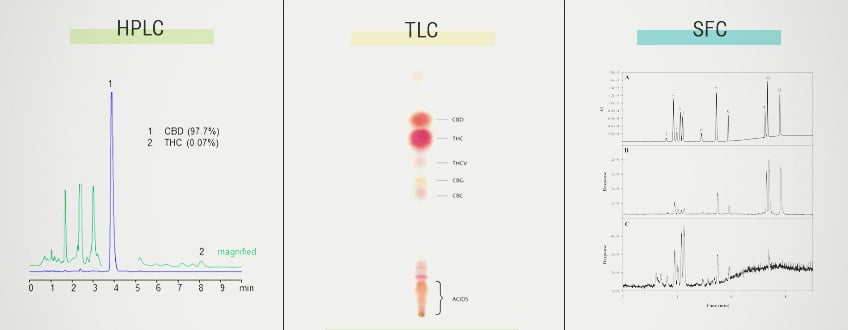What Are Terpenes?
Terpenes are what gives cannabis strains their distinctive flavours. They are the aromatic oils that the plant produces and that make a strain taste fruity or minty, give it an earthy or citrusy aroma or can make it smell like cheese.
Cannabis plants produce terpenes in the same glands where they produce Thc and Cbd, yet terpenes have until recently not gotten too much attention. Growers and medical researchers have in the past focused on THC and CBD, which means the knowledge about terpenes and their function isn’t too widely spread. Only recently has come to light that terpenes play a major role when it comes to the unique effects of marijuana.
Why do plants produce aromatic compounds such as terpenes?
As is often the case in the world of plants, terpenes are one way how plants can defend themselves from predators. By excreting a pungent aroma, plants can repel certain bugs but can also attract the beneficial insects that they need for pollination.
How much and what type terpenes a cannabis plant produces depends on various factors. The same strain doesn’t necessarily always produce the same aromatic compounds. This can depend on factors such as the climate, what soil and fertilisers are being used, the age of the plant, as well as a few other things.
Today, we have discovered about 100 different terpenes in marijuana. Each particular strain has its unique types and combination of terpenes in various concentrations.
The most interesting thing about terpenes, however, is not that terpenes are responsible for cannabis’ multitude of distinctive flavours and aromas, but that terpenes work synergistically with cannabinoids, such as THC. One indication for this is that some strains may have the exact same levels of THC and CBD, yet their effects can be quite different from each other. Researchers are now saying it is the terpenes that are responsible for a strain’s unique effects.

The Difference Between Cannabinoids and Terpenes
Cannabis produces hundreds of different phytochemicals that fall into several categories. Found all throughout nature, terpenes underpin the unique smells of pine forests, orange peels, and freshly cured cannabis.
Cannabis plants produce over 200 different terpenes, and each cultivar holds varying amounts of each. These aromatic molecules contribute to the diverse tastes and scents of different strains.
Cannabis also produces a more unique class of chemicals: cannabinoids. Although members of this group are found elsewhere in nature, molecules such as THC and CBD are exclusive to weed. These molecules underpin the unique effects of the herb, from psychoactive THC-fueled experiences to the grounded and clear-headed effects of CBD.
Cannabinoids and terpenes affect the body in different ways. Cannabinoids like THC directly latch onto cannabinoid receptors throughout the body to produce their effects, whereas most terpenes interface with different receptors.
However, molecules such as caryophyllene are classed as both terpenes and cannabinoids. The chemical provides peppery and earthy scents, and also directly binds to CB2 receptors of the endocannabinoid system.
How Do Terpenes Work?
Terpenes work in myriad ways. Aside from injecting pleasant tastes and smells into the cannabis experience, these molecules also play a huge role in the effects of each strain.
Cannabis scientists have identified an interplay between terpenes and cannabinoids. Molecules from these two families appear to work together to produce enhanced benefits—a phenomenon known as the entourage effect.
For example, limonene, caryophyllene, and pinene work side by side with THC to produce several benefits, and CBD and linalool also have a special synergistic relationship. Terpenes also produce effects entirely on their own. Vast amounts of studies document the fascinating effects of these molecules in isolation.
Do Terpenes Get You High?
Terpenes don’t exert a psychoactive high in the same way as THC. However, they do work in more subtle ways to alter mood through interaction with the serotonin and dopamine systems. These molecules also influence the high generated by cannabinoids and “tweak” it in noticeable ways. For example, terpenes such as limonene serve up a refreshing and stimulating sensation. In contrast, myrcene provides more of a relaxing and stoning effect.
Will Terpenes Show Up on a Drug Test?
Nope! You’re completely safe with terpenes when it comes to drug testing at work. These molecules are found everywhere, and chances are you unknowingly ingest plenty of terpenes each day. You’re introducing terpenes into your system with every sip of orange juice and every breath you take while walking through the woods.
Terpenes: The Next Frontier for Medical Cannabis
Terpenes have the potential to completely change the cannabis industry. In fact, they’re already making huge waves. The discovery of a synergistic relationship between cannabinoids and terpenes has set the stage for a future of carefully tailored extracts designed for specific conditions and experiences.
Many cannabis users are already setting their attention on full-spectrum extracts that contain more than just cannabinoids. These blends contain high levels of terpenes, flavonoids, and other cannabis phytochemicals that converge to provide a holistic effect.
Now, manufacturers are setting their sights on customized blends that harness the power of the entourage effect to offer greater symptomatic relief.
For example, early research suggests that limonene may boost the antioxidant effects of THC, whereas linalool could enhance the cannabinoid’s muscle-relaxing properties. Likewise, linalool seems to enhance CBD's potential to reduce feelings of nervousness.
Despite these interesting findings, research remains in the early stages. With over 200 terpenes and 100 cannabinoids in the cannabis plant, the future of research on the entourage effect will surely unravel some incredible findings.

Do Terpenes Determine Indica or Sativa Effects?
If you’re reading this article, you likely know the difference between indica and sativa cannabis strains. This nugget of conventional wisdom has dominated the cannabis space for decades. Traditionally, indica-dominant strains describe stoning varieties, whereas sativa cultivars are described as energetic and cerebral.
However, cannabis scientists have recently scrutinised this paradigm. The traditional model associates these attributes with genetic factors and divides indica and sativa strains into different subspecies of the plant.
More recent discoveries instead link the effects of a strain to its specific cannabinoid and terpene profile. Although indica and sativa titles certainly correlate to the morphology of a strain, they don’t necessarily determine the chemical profile within.
THC plays the role of the active constituent within psychoactive cannabis strains. But, why do different strains produce different highs? Terpenes hold the answer. Through the entourage effect, terpenes determine whether a high will be physical and stoning or cerebral and stimulating.
This new understanding of cannabis has led some researchers to even ditch the idea of strains altogether, as plants of the same cultivar can vary in terpene level as well. Instead, they suggest a new paradigm of “chemovars”, where plants are categorised based on their unique phytochemical profiles and subsequent effects.
Calculating Terpene Content in Plants
So, we know terpenes have a big impact on the effect of a strain, but how can we find out the quantity and type of terpenes in our plants? The simple answer: science. Laboratory technicians are able to determine the terpene content of an individual plant by running a sample through various testing procedures.
Both liquid and gas chromatography work to separate the phytochemicals in a batch of weed, enabling technicians to measure the quanity of each terpene and cannabinoid with high accuracy. However, almost no casual growers have access to this kind of kit or the knowledge of how to use it.
Luckily, most reputable seed banks provide testing data to customers. Whenever you’re shopping for new seeds, have a scroll around and look for terpene and cannabinoid percentages. These numbers are subject to fluctuation based on environmental factors, but they still provide a good idea of what your end product will taste and feel like.

Can You Increase Terpene Production?
Genetics play an important role in the terpene content of a strain. Cannabis breeders actively combine desirable terpene profiles to create strains that possess a specific blend. However, environmental factors can sway just how much of a specific terpene a cannabis plant expresses.
Growers can take advantage of these influencing cues to drive up terpene levels, subsequently enhancing the taste, smell, and effects of a harvest cultivators can hone in on.
- Adequate stress
- Correct lighting
- Optimal temperatures
- Flushing before harvest
- Proper drying and curing
How Are Terpenes Ingested?
Cannabis terpenes are mostly ingested via smoking and vaping. Every hit of cannabis flower or extract delivers a host of terpenes into the lungs that swiftly pass into the bloodstream.
Interestingly, modern innovations within the cannabis industry have made it so users no longer have to rely on specific strains to access certain terpenes. Several manufacturers now offer terpene extracts—many of which are isolated from natural sources such as fruits—that users can add to their extracts to modulate the experience.
Terpenes are volatile molecules, meaning they degrade at relatively low temperatures. For this reason, vaping offers the best means of keeping terps intact. Vaporizers work through conduction heating, convection heating, or a mix of the two, using much lower temperatures than those found at the burning end of a joint. Plus, modern vaporizers allow users to alter temperature settings within a single digit. Because different terpenes have different evaporation points these devices enable users to target specific terps

